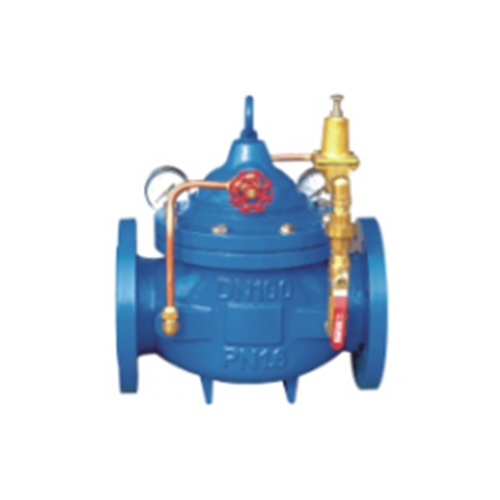
Gate Valve Flow Characteristics and Performance
1. Introduction
Gate valves are among the most widely used valves in industrial and municipal applications due to their ability to provide a tight shutoff and low-pressure drop when fully open. They are primarily designed for on/off service rather than flow regulation. Understanding their flow characteristics, performance factors, and operational limitations is essential for proper selection and application in piping systems.
This paper explores the flow characteristics, performance parameters, advantages, disadvantages, and key considerations for gate valve operation in various industrial settings.
---
2. Gate Valve Design and Working Principle
2.1 Basic Construction
A gate valve consists of the following main components:
- Body: Houses the internal components and connects to the pipeline.
- Bonnet: Covers the valve body and provides a seal.
- Gate (Disc): A movable barrier that controls flow by moving perpendicular to the flow direction.
- Stem: Connects the gate to the actuator (manual or automated).
- Seat: Provides a sealing surface for the gate when closed.
2.2 Operation Mechanism
Gate valves operate by raising or lowering the gate via a threaded stem mechanism. When fully open, the gate retracts into the bonnet, allowing unrestricted flow. When closed, the gate seats firmly against the valve body, preventing flow.
There are two main types of gate valves based on stem movement:
- Rising Stem: The stem moves upward as the valve opens, providing visual indication of valve position.
- Non-Rising Stem: The stem does not move vertically; instead, the gate moves internally.
---
3. Flow Characteristics of Gate Valves
3.1 Flow Path and Pressure Drop
Gate valves are designed for minimal flow restriction when fully open. The straight-through flow path ensures a low-pressure drop compared to other valve types (e.g., globe valves). However, partially open gate valves experience turbulence and increased pressure drop, making them unsuitable for throttling applications.
3.2 Flow Coefficient (Cv)
The flow coefficient (Cv) is a critical parameter indicating the flow capacity of a valve. It represents the volume of water (in gallons per minute) that flows through a fully open valve at a pressure drop of 1 psi. Gate valves typically have a high Cv due to their unobstructed flow path.
3.3 Velocity Profile and Cavitation Risk
When a gate valve is partially open, high fluid velocity near the gate can cause:
- Cavitation: Vapor bubbles form and collapse due to pressure fluctuations, leading to material erosion.
- Water Hammer: Sudden valve closure can cause pressure surges, damaging pipelines.
To mitigate these risks, gate valves should be used strictly for full-open or full-close applications.
---
4. Performance Factors Affecting Gate Valve Operation
4.1 Pressure and Temperature Ratings
Gate valves are rated for specific pressure-temperature conditions based on material selection (e.g., cast iron, carbon steel, stainless steel). Exceeding these limits can lead to:
- Seat leakage due to thermal expansion.
- Body deformation under high pressure.
4.2 Material Selection and Corrosion Resistance
Common materials include:
- Cast Iron: Economical but prone to corrosion.
- Carbon Steel: Stronger, suitable for high-pressure applications.
- Stainless Steel: Excellent corrosion resistance for aggressive fluids.
- Bronze/ Brass: Used in water and low-corrosion environments.
4.3 Sealing Performance
Gate valves rely on metal-to-metal or soft-seated (elastomer-lined) sealing. Metal-seated valves are durable but may allow minor leakage, while soft-seated valves provide tighter shutoff but degrade at high temperatures.
4.4 Actuation Methods
- Manual Operation: Handwheel or lever for small valves.
- Electric/Pneumatic Actuators: Used for remote or automated control in large-scale systems.
---
5. Advantages and Disadvantages of Gate Valves
5.1 Advantages
- Low Pressure Drop: Minimal flow resistance when fully open.
- Bidirectional Flow: Can be installed in either flow direction.
- Tight Shutoff: Effective sealing in closed position.
- Durability: Long service life with proper maintenance.
5.2 Disadvantages
- Not Suitable for Throttling: Partial opening causes erosion and vibration.
- Slow Operation: Requires multiple turns to open/close.
- Susceptible to Seat Damage: Particles in fluid can scratch sealing surfaces.
---
6. Applications of Gate Valves
Gate valves are commonly used in:
- Water and Wastewater Systems: Isolation in distribution networks.
- Oil and Gas Pipelines: Shutoff in transmission lines.
- Power Plants: Steam and cooling water control.
- Chemical Processing: Handling non-corrosive fluids.
---
7. Maintenance and Troubleshooting
7.1 Common Issues
- Leakage: Worn seats or damaged gates.
- Stem Binding: Corrosion or lack of lubrication.
- Cavitation Damage: Erosion near the gate.
7.2 Maintenance Best Practices
- Regular Lubrication: Ensures smooth stem movement.
- Periodic Inspection: Checks for wear and corrosion.
- Proper Installation: Avoid misalignment and excessive torque.
---
8. Conclusion
Gate valves are essential components in fluid control systems, offering excellent shutoff capabilities and low-pressure drop in fully open positions. However, their design makes them unsuitable for throttling, and improper use can lead to performance issues. Understanding their flow characteristics, material compatibility, and operational limits ensures optimal performance and longevity in industrial applications.
By selecting the right gate valve type, material, and actuation method, engineers can enhance system efficiency while minimizing maintenance requirements. Future advancements in sealing technology and corrosion-resistant materials may further improve gate valve performance in demanding environments.
---
This comprehensive discussion provides a detailed overview of gate valve flow characteristics and performance, aiding in proper selection and application across various industries.
この Web サイトでは、お客様に最高のエクスペリエンスを提供するために Cookie を使用しています。
コメント
(0)